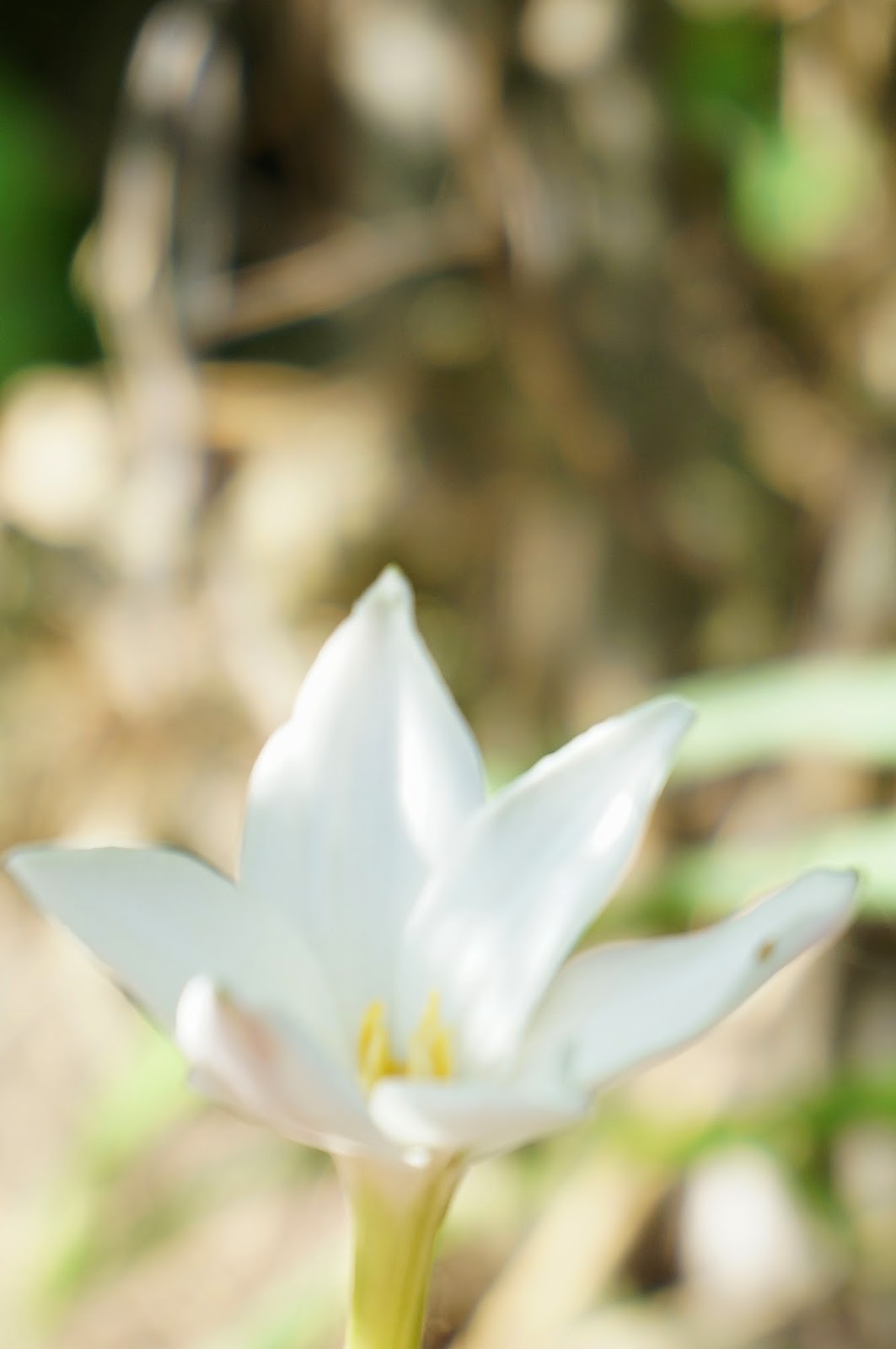 |
| What is this flower? |
I
spent well over two hours last night trying to get an ID on a new flower
blooming in the vacant-lot prairie. It wasn't in my wildflower books, at least
not that I could recognize, and I was really thrown by it's combination of
features. It had a disc like a sunflower, but what should have been simple rays
were notched twice. It looked like a cross between a sunflower and a
gaillardia.
I
was stumped- sunflower's disc, gaillardia's rays. Blue-grey-green foliage with
scattered spiney serrations along the leaf edges. What to do? Well, I sent up a
distress flare to my botanically inclined contacts. What's weedy, has notched
rays, a sunflower-like disc, and grows in Texas? I needed to know. After consulting with my naturalist
friends, we decided it was a weird-looking Texas blue weed (Helianthus ciliaris). Generally, when
you can't quite convince yourself an ID is right, that's because it isn't.
Not
in this case, however. I visited
the plant again the next morning (such was my desire to GET IT IDENTIFIED), and
another bud had opened. No notches in the rays. Now I could rest easy, having
found a second, fairly typical, specimen of blueweed. Individual idiosyncrasy
is the risk you run when you only have a few specimens from which to make a
judgment. I actually liked the extra decorative flourish from my unusual variant's
notched petals, but they sure did throw me. When I dug a little deeper to find
out more about this new plant, a descriptor that stuck out to me was "highly
variable". That phrase tipped
me over into certainty of my ID.
Despite
its weediness, blueweed is actually native to the southwest. In Texas, blueweed is more typical of
the panhandle and trans-pecos region than it is of the metroplex. Livestock don't
eat it, it reproduces by rhizome, and it prefers poor soils and disturbed
areas. Another term associated with this new flower: noxious weed.
Blueweed
is classified as a "noxious weed" in the states of Washington and
Oregon. This plant can be aggressive. It's highly drought tolerant, and, like
cattails and phragmites, it grows from rhizomes. This means that
mechanical chopping of the roots can multiply your problem. Like a starfish,
each fragment regenerates into a new plant. Biological control isn't an option
either- blueweed is highly resistant to natural pests. Sunflower beetles leave them
alone.
It
is intriguing to see this sunflower functioning as a small part of my urban
prairie, while in other places it can be a real problem. Washington state's
King County noxious weed page suggested that perhaps it is our native grasses
down here that help reign in this weed. Competition from our diverse grassland may
keep blueweed from becoming an aggressive pest in its home turf, but there is
no such checking force in the Pacific Northwest. I suppose this plant could
serve as a reminder: what seems innocuous at home isn't always universally so.
We should be careful with what we plant.
---
In other news, I added three new species to my vacant-lot
prairie plant list. These include the aforementioned Helianthus ciliaris, and
also Cooperia drummondii, and Asclepias viridis.
 |
| Another picture of ratany- to me it looks like an orchid when the flowers are open |
I've included more pictures and the updated plant list after the jump.
 |
| Pink ladies, Oenothera speciosa |
 |
| texas vervain, Verbina halei |
 |
| Cooperia drummondii |
 |
| Asclepias viridis? |
| Common Name | Latin Name | Date Observed |
| antelope horn | Asclepias asperula | 17-May |
| green antelope horn | Asclepias viridis | |
| evening rain lily | Cooperia drummondii | 17-May |
| hill country rain lily* | Cooperia pedunculata | 17-May |
| engelmann daisy | Engelmannia peristenia | 17-May |
| indian blanket | Gaillardia pulchella | 17-May |
| scarlet gaura | Gaura coccinea | 17-May |
| prairie verbena | Glandularia bipinnatifida | 17-May |
| texas blue weed | Helianthus ciliaris | 22-May |
| ratany | Krameria lanceolata | 17-May |
| lantana | Lantana urticoides | 17-May |
| texas bluebonnet | Lupinus texensis | 17-May |
| sensitive briar | Mimosa nuttallii | 17-May |
| yellow-puff | Neptunia lutea | 17-May |
| pink ladies | Oenothera speciosa | 17-May |
| texas frog fruit | Phyla nodiflora | 17-May |
| prairie parsley | Polytaenia nuttallii | 17-May |
| prairie coneflower | Ratibida columnifera | 17-May |
| two-leaf senna | Senna roemeriana | 17-May |
| carolina horse nettle | Solanum carolinense | 17-May |
| diamond flowers | Stenaria nigricans var. nigricans | 17-May |
| green thread | Thelesperma filifolium | 17-May |
| western spiderwort* | Tradescantia occidentalis | 17-May |
| texas vervian | Verbena halei | 17-May |

No comments:
Post a Comment